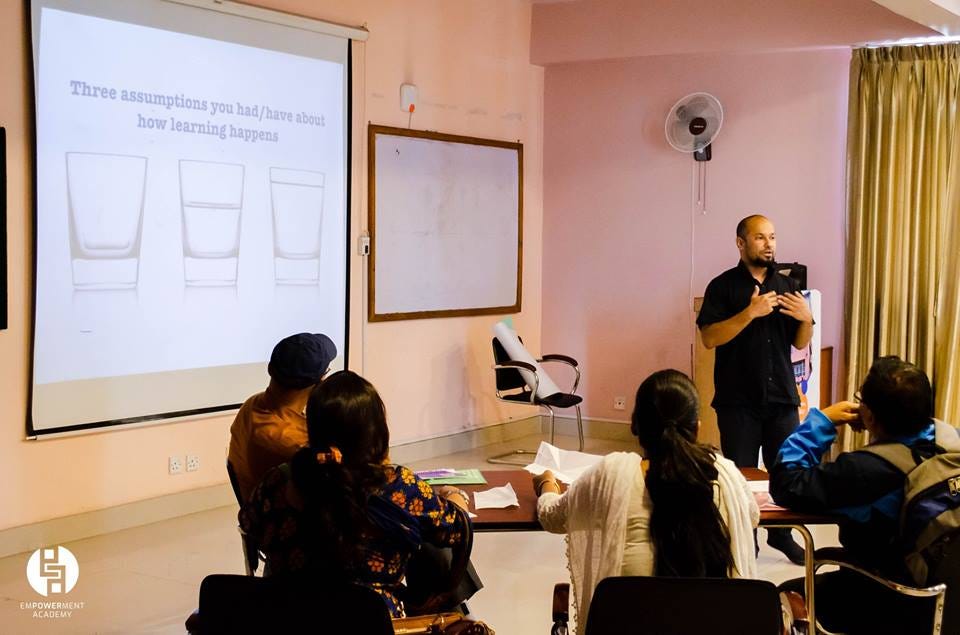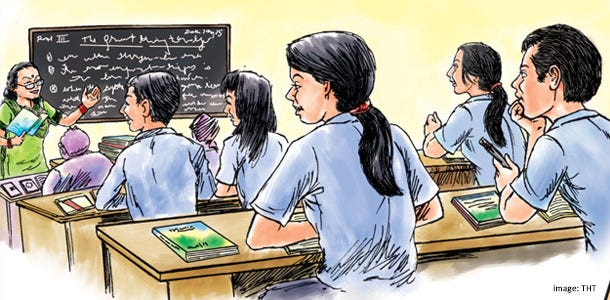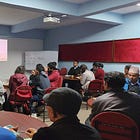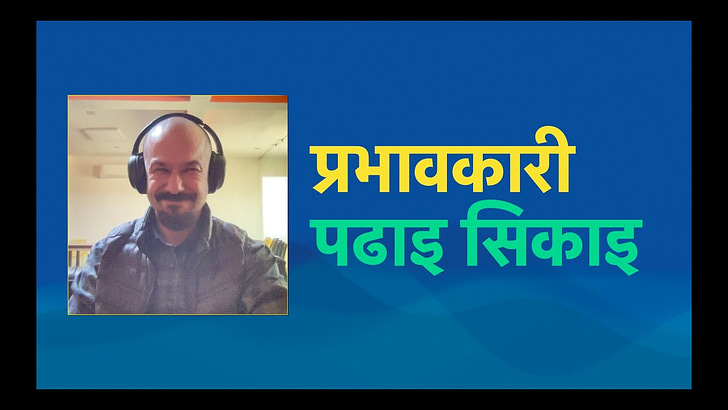
Two Prevailing Connotations of Lecture:
1. Lecture as a moral finger-wagging:
I find it quite interesting how the word “lecture” has two intriguing connotations.
The first connotation being a mix of moral + negative/superiority signaling
Like, when your parent start getting nostalgic and tell you, “In our days, we would not talk back to our parents. We would get smacked right in our faces. But these days, look at these young people. So disrespectful and immoral.”
The usual “हाम्रो पालामा त्” or “When we were young…” generational bitterness.
You immediately roll your eyes up, breathe out frustration and say, “Stop lecturing us about what you used to do in your golden days.”
Here’s another instance. Your teacher tries to tell you what is good or bad for you, or what you should do or should not do in your own life.
And you feel that the teacher is trying to impose his/her own expectations, beliefs, moralities and values on you by giving this lecture. You feel that your teacher treats you like an immoral child, aimlessly wasting away the precious moments of life.
Politicians too do this regularly to the people (Remember this: ask not what your country can do for you, ask what you can do for your country.)
Lecture in this sense is an act of dismissal or talking down at someone with disapproval. Finger-wagging at someone and treating them like a snotty child.
Eventually you say, “Enough, enough. Don’t lecture me.” “भयो भयो धेरै लेक्चर दिनु पर्दैन मलाई।”
Someone lecturing you sounds passive aggressive. It sounds like that person’s resentments thrown at you. Regardless of the intention (positive or negative), it always sounds like someone is judging your character/action/belief and then giving you unwanted suggestions. It’s like you are being tried in someone else’s moral court.
That’s a legitimate reason for you to dislike lecture.
Many parents, teachers, elders, even strangers do come off as giving you a lecture. It is what it is. All you can do is control your response.
2. Lecture as a teaching method:
The second connotation is related with the teaching method.
One that is one-way, boring, and uninspiring. It is labeled as traditional. It is teacher-centered. And it’s bad.
In the current educational discourse, lecture method is portrayed as:
The teacher is speaking (active) and the students are just listening (passive).
The teacher is pouring the knowledge and the students are receiving it.
The teacher is enforcing authority and the students are simply complying.
It has a few different names or versions.
It’s tagged as the infamous “Teacher as the Sage” method. The teacher stands in front of the class or stands behind a lectern, and delivers the bookish content. And the whole time, the teacher acts as if he or she is the only source of knowledge or information.
It’s also tagged as the notorious “Chalk and Talk” method, where the teacher is seen writing on the board and explaining the points. While the students are either taking notes on their notebooks verbatim or simply listening to the teacher talking away.
The Banking, Khutruke, Karuwaa Model of Teaching
When a teacher is giving lecture, it seems, students do not get any opportunity to interact. They do not get to ask question. All they can do is just listen to the teacher passively.
As a result, it seems, there’s no active learning. There’s no thinking. There’s no learning. There’s only “filling the pail” but no "lighting of a fire".1
A teacher I know calls it the khutruke model (शिक्षणको खुत्रुके मोडल), depositing knowledge from the teacher's head into students' heads. Probably derived from the "banking model of teaching”2.
Another prominent educationalist of Nepal has labeled this approach as the karuwaa system (करुवा प्रणाली) - a one-way pouring of knowledge from one generation (teacher) to another (students).
There’s an additional negative belief attached with lecturing. Since the teacher is the one speaking and teaching most of the time, it’s the teacher who ends up learning. Not the students.
This probably comes from a quote attributed to Benjamin Franklin, “Tell me, I forget. Teach me, I remember. Involve me, I learn.” Since lecture method is apparently ‘telling’ to the students, they don’t learn.
The Prime Culprit
So, lecture method is the proverbial hammer that traditional teachers use it all the time to smash on the students’ head, to silence their voice, and to kill their creativity/critical thinking (an argument popularized by Ken Robinson’s Do Schools Kill Creativity?)
Seen from this view, lecture is the prime culprit in the whole education system. And, the traditional teachers as the accomplice in this crime.
It’s best to avoid it in teaching, that’s the popular belief you will come across in almost all the talks/articles/interviews with educators and educationalists, esp. from the progressivist and constructivist camps.
But, is the lecture method that terrible?
Yes. And, No.
(For our understanding, let’s label ‘lecture’ or ‘lecturing’ as having the first connotation, and ‘lecture method’ as having the second connotation.)
Upcoming posts:
Part 2: The Case AGAINST Lecture: why teachers are to be blamed for it
Part 3: The Case FOR Lecture: how teachers can get better at it
From the archives:
What works in teaching and learning?
This quote is often credited to W.B. Yeats. “Education is not the filling of a pail, but the lighting of a fire”. But seems like someone just made it up. It’s a catchy rhetoric but with a logical fallacy of False Equivalence. One could follow the structure of the quote and make similar ones like: education is not the instructing how to play the guitar, but the composing of music.
The idea of banking model in education comes from the socialist educationalist Paulo Freire. You might already know, I find his theory more about politics and less about how learning happens. Good for a time pass guff.







